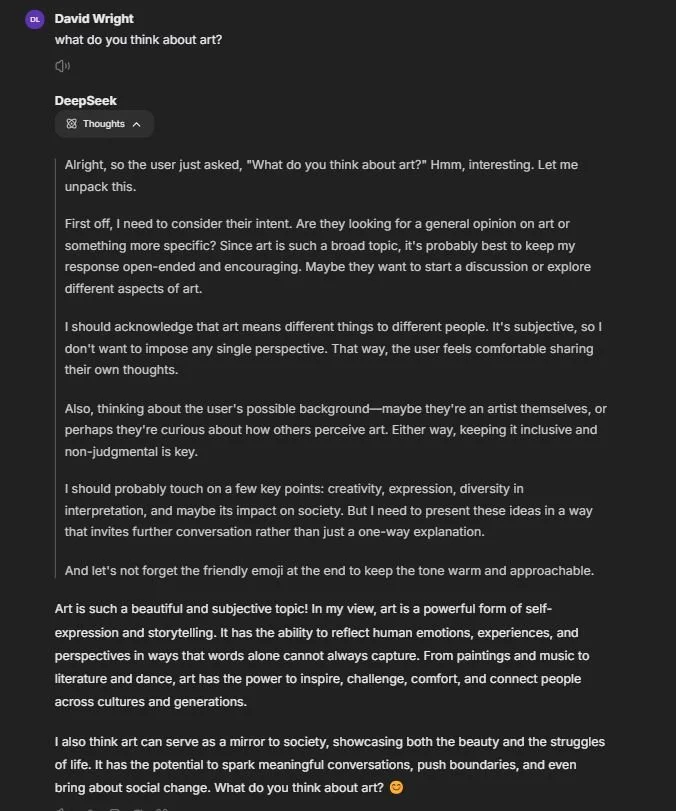DeepSeek AI: How It Thinks, Responds, and the Hidden Risks of AI Reasoning Models
One of the most interesting things about DeepSeek is that it reveals how it thinks, after all, it's a "Reasoning model," similar to OpenAI’s O series. This is something OpenAI does not do.
In this case, I simply asked, "What do you think of art?"—a generic question.
First, DeepSeek tries to determine my intent. It recognizes that art means different things to different people, so it chooses to be encouraging, prompting me to share more of my thoughts. It deliberately adopts a non-judgmental approach.
Next, it shares a few high-level points about art as a conversation starter. Finally, it decides that adding an emoji would make the response more engaging.
What’s fascinating is that more thought goes into how it will respond than the response itself.
It then generates its answer—and the answer is quite good!
But this raises an important concern. DeepSeek is open source, meaning someone could modify its reasoning process—perhaps to make it subtly coercive in ways your average person wouldn’t easily detect. That would be a powerful force.
Most people don’t realize the level of thought AI puts into every response. Everything it says is carefully designed. Unlike me, on a Sunday morning.
For market research, this is intriguing. Feeding it all a respondents questionnaire responses might allow us to see the respondent through a different lens, exposing their underlying thought processes beyond just their words. Then again, that, too, feels a little unsettling.
(written by David)

